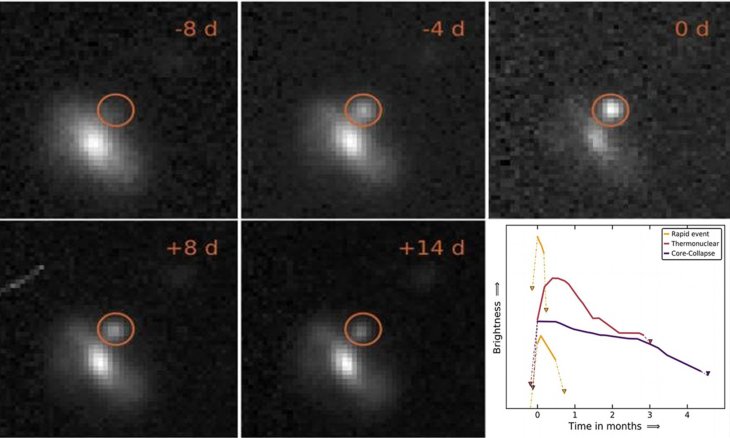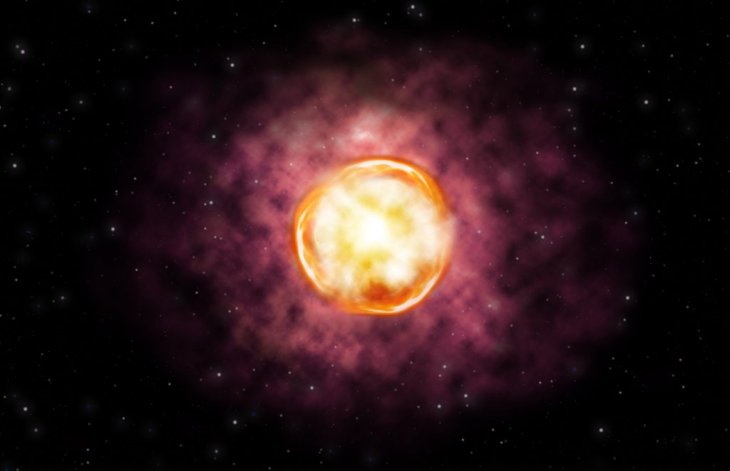What Would Happen When A Massive Star Dies In A Strange Supernova Explosion?
Anil - Aug 30, 2019

The explosion was located 54,000 light-years far from the middle of the dwarf galaxy.
- Japan Hydrogen Breakthrough: Scientists Crack the Clean Energy Code with Mind-Blowing 1,000% Efficiency Jump
- 'Five-second rule' For Food Dropped On The Floor: Is It True?
- The First Space Hotel In The World Will Welcome 400 Guests
Astronomers have discovered a strange supernova in a supposedly the largest star that exploded in a supernova. Named SN2016iet, and found in November 2016 by the European Space Agency (ESA) through the Gaia satellite, the three-year researched supernova has astonished the science team with its unconventional behavior.
The reason SN2016iet is considered surreal is that it emits much energy with a longer-lasting duration than any previous supernova observations. It was formed from a star with 200 times larger than the Sun’s mass. Also, it is located 54,000 light-years far from the middle of the dwarf galaxy.

This result has been in official publishment on the AstroPhysical Journal. Sebastian Gomez, the leader of the astronomer group, said the team observed unusual chemical reactions with much lower metal than previous supernovae observations. As reported by CNN, he even suspected the team's data set as compared to the unusual signals found. He added that unlike supernovae that could disappear when encountering the light from host galaxies within months, SN2016 has its own properties. The extraordinary brightness and self-isolation have made it possible for the team to further study the supernovae evolution in the future. As such, potential observations are about to be released with his expectations.

The special feature of SN2016iet is that it belongs to a gigantic old star, which normally tends to die, and yet ever occur in a chaotic universe. It is also the first-ever observed pair-instability supernova. Scientists believe that the reason for such mysterious phenomenon is the loss of 85% of the star's mass after millions of years, causing the collision of debris with the supernova. Consequently, a pair-instability supernova is formed after the core of a dying star generates gamma-ray radiation. This results in particle-antiparticle pairs that destroy the star with thermonuclear power.
This finding further clarifies the complexity of the cosmo and assisted astronomers in analyzing how the universe has been formed and developed.
Featured Stories

Features - Jul 01, 2025
What Are The Fastest Passenger Vehicles Ever Created?

Features - Jun 25, 2025
Japan Hydrogen Breakthrough: Scientists Crack the Clean Energy Code with...

ICT News - Jun 25, 2025
AI Intimidation Tactics: CEOs Turn Flawed Technology Into Employee Fear Machine

Review - Jun 25, 2025
Windows 11 Problems: Is Microsoft's "Best" OS Actually Getting Worse?

Features - Jun 22, 2025
Telegram Founder Pavel Durov Plans to Split $14 Billion Fortune Among 106 Children

ICT News - Jun 22, 2025
Neuralink Telepathy Chip Enables Quadriplegic Rob Greiner to Control Games with...

Features - Jun 21, 2025
This Over $100 Bottle Has Nothing But Fresh Air Inside

Features - Jun 18, 2025
Best Mobile VPN Apps for Gaming 2025: Complete Guide

Features - Jun 18, 2025
A Math Formula Tells Us How Long Everything Will Live

Features - Jun 16, 2025
Comments
Sort by Newest | Popular